Swathi’s story breaks a few stereotypes about Finnish society as well as what people might think of living in Kupittaa, Turku. How did Swathi find a home for her family? What was her reason for starting a business? How does she find her Finnish neighbors? Read what Swathi and her family has experienced during the 8 years living in Kupittaa.
From the tropics of South-India to the winter in Finland
“I came to Finland in 2011 along with my husband. I didn’t know any area, like is this a good area or a bad area. The only thing was that my husband worked in Biocity in Science Park and I wanted to live somewhere close to that,” tells Swathi Guggilam about how she and her husband chose Kupittaa as a place to live.
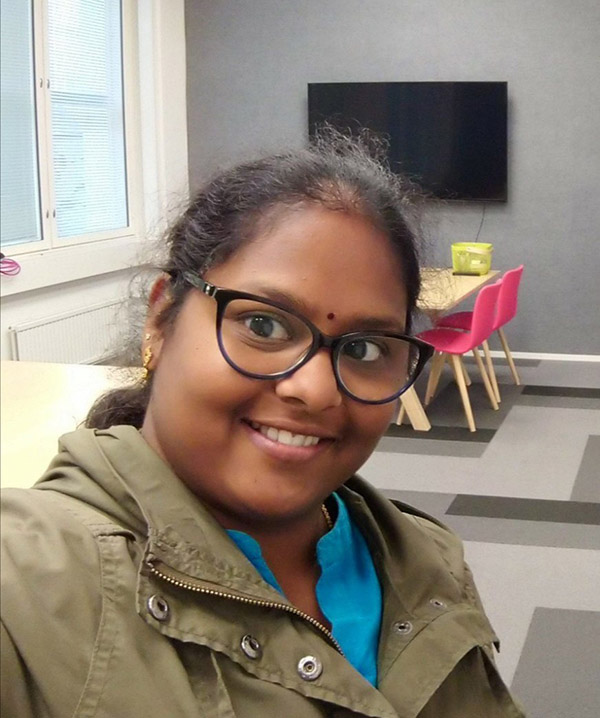
Swathi and her husband are originally from the tropical Southern India. Swathi had heard about the terrifying cold winters in Finland and thought it would be better not to spend too much time traveling between home and work. Reconsidering this, the couple ended up living in Kupittaa and now during the last 8 years they have doubled their family’s size with two little children.
Even after having kids Swathi thinks Kupittaa is the place to be. It has everything - workplaces, Kupittaa park, schools and daycares, services, city center nearby, good connectivity and irreplaceable neighbors.
All roads lead to Kupittaa
“We don’t have a car. I guess the reason is the good connectivity. -- Everything is so close and so connected,” Swathi explains.
Good connectivity is one of the things that makes Kupittaa popular. It’s a hub where many find their work place, hobbies or other daily activities as well as a place to catch a train towards Helsinki. In addition, the Science Park area is growing very fast.
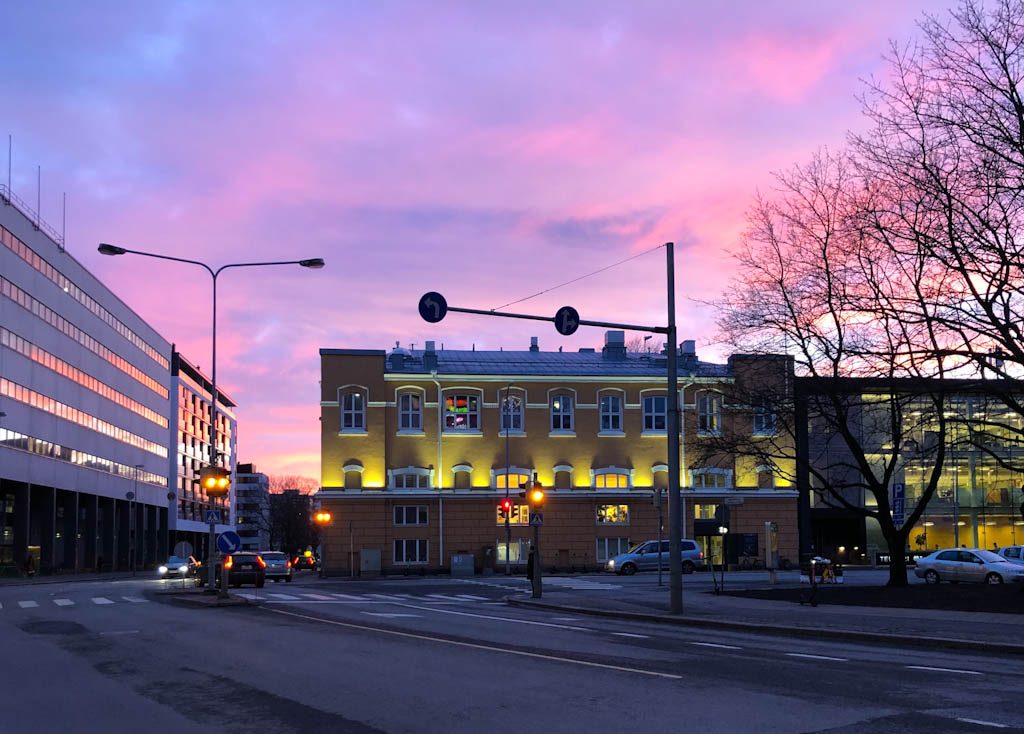
In fact, quite a few people live in the actual Kupittaa district. Also, the border of Kupittaa and Itäinen keskusta (The Eastern Center of Turku) is quite ambiguous and most of the people living close to Science Park and Kupittaa Park consider living in Kupittaa even though it would be officially Itäinen keskusta.
How is Kupittaa for families with children?
In Kupittaa Park you can find a huge playground for kids called Seikkailupuisto and an animal park where you can find goats and birds for example. In the wintertime the indoor Kupittaa stadium is open every Sunday for kids.
“And the second thing is children. Engaging kids in the Kupittaa Park is the best place. No matter what season it is. When it’s summer or winter or snow, everything!” Swathi tells.
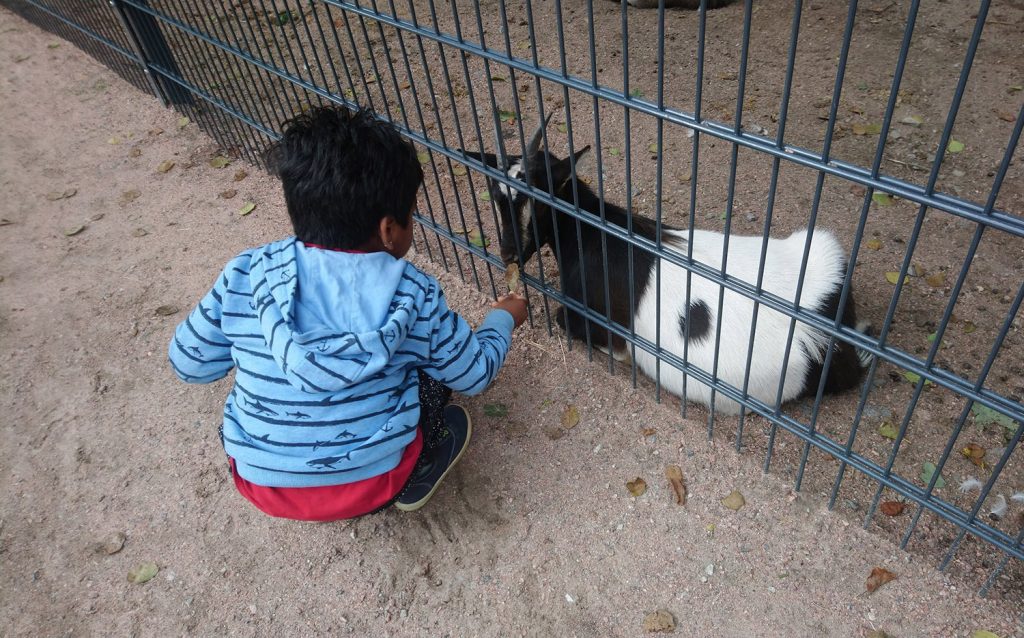
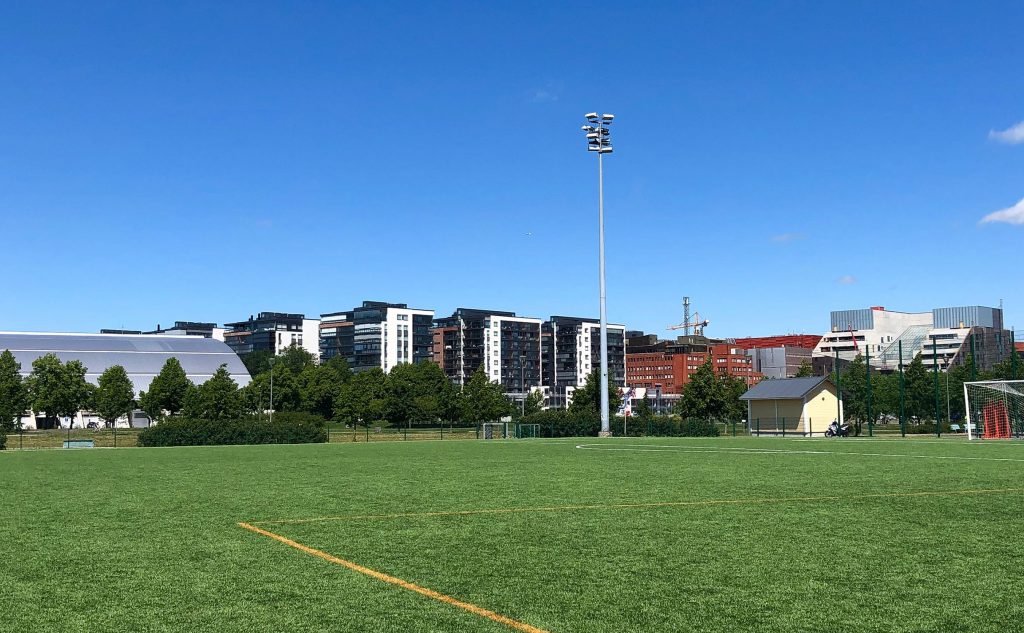
On top of it all, Kupittaa is a safe area. When Swathi first came to Finland, she heard that she shouldn’t go out in the area during night time because some people might be drunk. Anyhow she hasn’t experienced anything that would make her feel unsafe.
“If I need to work some extra time in the evening I will come to my office and even if it will be 22:00 to 22:30 in the night, I don’t feel scared. -- Once or twice I saw some police patrolling. Then I thought someone might be doing some kind of thing, but other than that I don’t have any personal experiences about bad things happening,” she tells.
The only thing that needs to be developed in Kupittaa that Swathi could figure out was the need for a pharmacy. Around the Science Park area and nearby the Kupittaa station there sure would be a good place for a pharmacy. And an ATM!
Such lovely neighbors!
Swathi’s family used to live in a 40 m² apartment and after having kids this turned out to be rather small. Swathi struggled, because she really wanted to stay in the area but there was no bigger apartments available (as most of the apartments in Kupittaa are not built for big families). However, they got really lucky, as Swathi tells:
“In the park of the apartment we met some neighbors. They are a family with three children. And in a conversation we asked what is the size of their house and then they said that that is a 90 m² house. The owner had combined two 40 m² houses. They were there for 1,5 year more. Then, they suggested that they are moving to some other place so they said that “We will be moving soon. The house will be empty.””
Now Swathi’s family has enough space and even two main doors to their apartment. On top of that Swathi tells about the caring neighbors that work as a support network for the family:
“I should say something about my neighbors. — They are so good and even if I don’t speak much Finnish, when I got my child they came to my house and gave a packet, a card, everything and that felt so nice! One of the ladies also offered “I can babysit if you want to go somewhere or do some things.” That’s so nice!”
Only one caring person in the neighborhood can make a huge difference. Swathi told especially about one lady who is like a grandparent to her kids. This neighbor also has grandchildren but they live far away and Swathi’s children have the same issue with their real grandparents.
“She loves my kids so much and she gives her grandkids’ toys for my children. At least one day she was doing some kind of artwork, some decoration and she hung it on her balcony. My daughter was quite interested in these crafts and she asked how she did them. Then she taught her.” says Swathi.
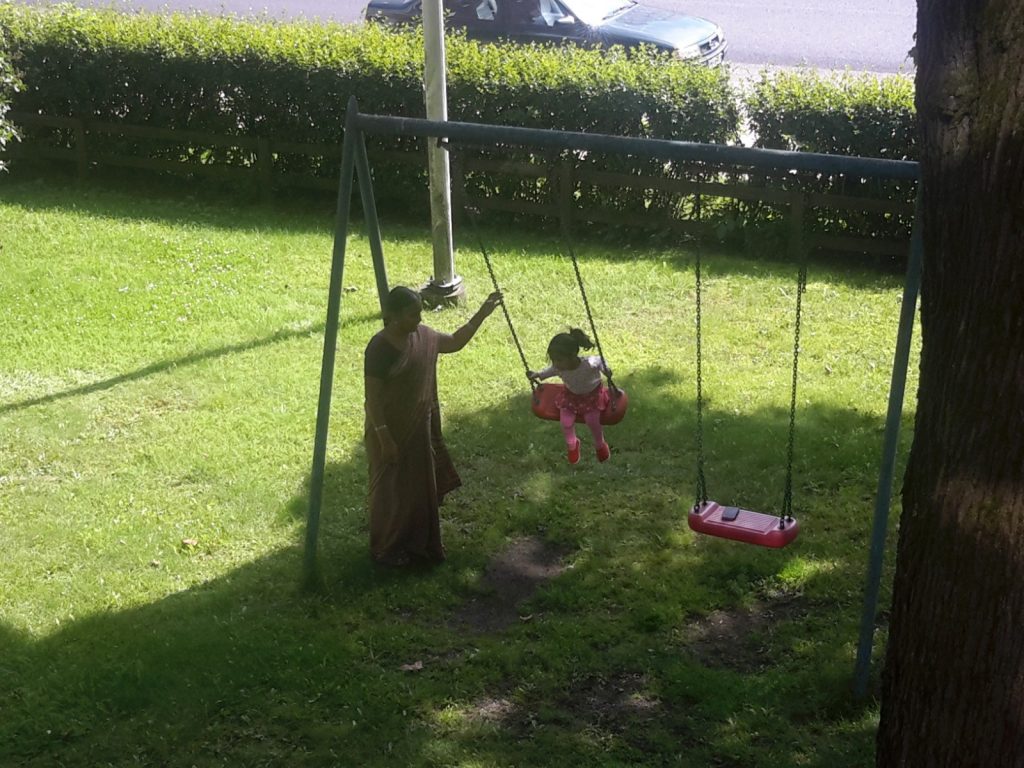
Another story Swathi tells is how daycares and schools have grandparent’s days which she first felt like they are something her children might miss out.
“In childrens school there is like “isovanhemmat päivä” grandparent’s day. Every year my kids will miss that day. But she [the neighbor] offered to come along with me once to the daycare and -- my child was so happy and she started to tell her friends that “Even I have isovanhemmat!”. Usually I’m the only mother going when everyone else has grandparents”, Swathi explains.

Her neighbor also makes woolen socks for the kids during Christmas — just like a real Finnish granny!
“I have all those socks, they begin from the small and now they are too small for use but I keep them because it’s love. Not socks, it’s love”, Swathi says.
Becoming a mother and a business woman
Swathi came to Finland originally because of her husband’s post doctoral research at the University of Turku and she had only completed her post graduate degree. She was ready to take the challenge and start screening what she could do in Finland. These days the couple has a company called Shrivoice offering real time communication services.
“I used to have some free time. I was on maternity leave. That was the time my brain started working actually”, Swathi tells.
While maternity leave gave Swathi a break where she could figure out the business idea, when the kids came, she realised her own need for it. One of the advantages of Shrivoice is that it is a VoIP service where only one person needs to have connectivity at a time and it cuts all the waiting and the need for a stable internet of both parties.
“After having kids, getting free time to talk is something demanding and I’m not sure if everybody will be having free time at the same time as I have. That made me think of this as a service that I could offer”, Swathi explains.
Unlike a stereotype of a business woman, Swathi started her own business in order to be able to concentrate on her children better and have flexible working hours.
“I want to focus on my kids first. Then something else. But at the same time I want to earn something myself. That’s why I thought of doing something that has flexible timings. I can manage my own time, I can take a day off whenever I want. I can start working when kids fall asleep. That was the primary initial for starting a business”, she explains.
A little bit about the language
The most challenging thing in Finland for Swathi has been the language. Her mother tongue is Telgu which is a South Indian language and on top of that she speaks Hindi and English. Mostly in Finland it is possible to survive with English, although she has noticed that talking Finnish makes people more connected and engaged in the conversation. She started learning Finnish when her children entered the daycare:
“Vähän, vähän suomea.” — I felt like it’s a bit isolated if I don’t know the language. I should know what’s going on around me. I think language is one thing that connects people. So with that intention me and my husband have decided that our kids should go to Finnish daycare so they can have their own circle, their own friends and they won’t miss that little childhood stuff that they can do with their fellow kids. So my daughter started going to finnish day care so I started going to Finnish aikuisten koulu (adult school). And so we learned together. But she became a professional Finnish speaking person what I am not yet.”

One thing Swathi found out that could be developed in Turku and in Finland in general was the need for official papers in English. If the city aims to grow as a favourable place for immigrants it needs to apply a lingual system that supports this purpose. Swathi tells the next about the linguistic challenges:
“Finland is a small country. In order to be more welcoming for business or for trade or finance or economy, they need to be quite welcoming, which means the language. Of course they are warm, but how do foreigners know that they are warm? Language. I heard that in Helsinki they have started to use English as a language in official documents and in all official things. It would be great if Turku also started doing that. At least some Kela papers and important documents… they don’t have it in English.”
“There are so many favourite things in Finland that dominate the things I dislike”, she states and smiles.
Why should one move to the Kupittaa area?
This is what Swathi wants to tell somebody who’s considering moving to Kupittaa:
“The house rent and things are a bit costly but you wont feel like you’re wasting money. You get the value of every penny you’re spending. It has all the things packed in it, shops, schools, daycare, park, fun, everything.”

“I like everything about Kupittaa. And it’s been almost 10 years since we came to Finland,” Swathi explains, “We don’t want to leave the area!”
-Ninna
P.S. An international student Noemi also described her love towards Kupittaa Park in our previous blog post.
If you're interested about Kupittaa, you can read more about it in the neighborhood page. Or if you are looking for the most suitable place to live, let us help and try our search engine for neighborhoods!
